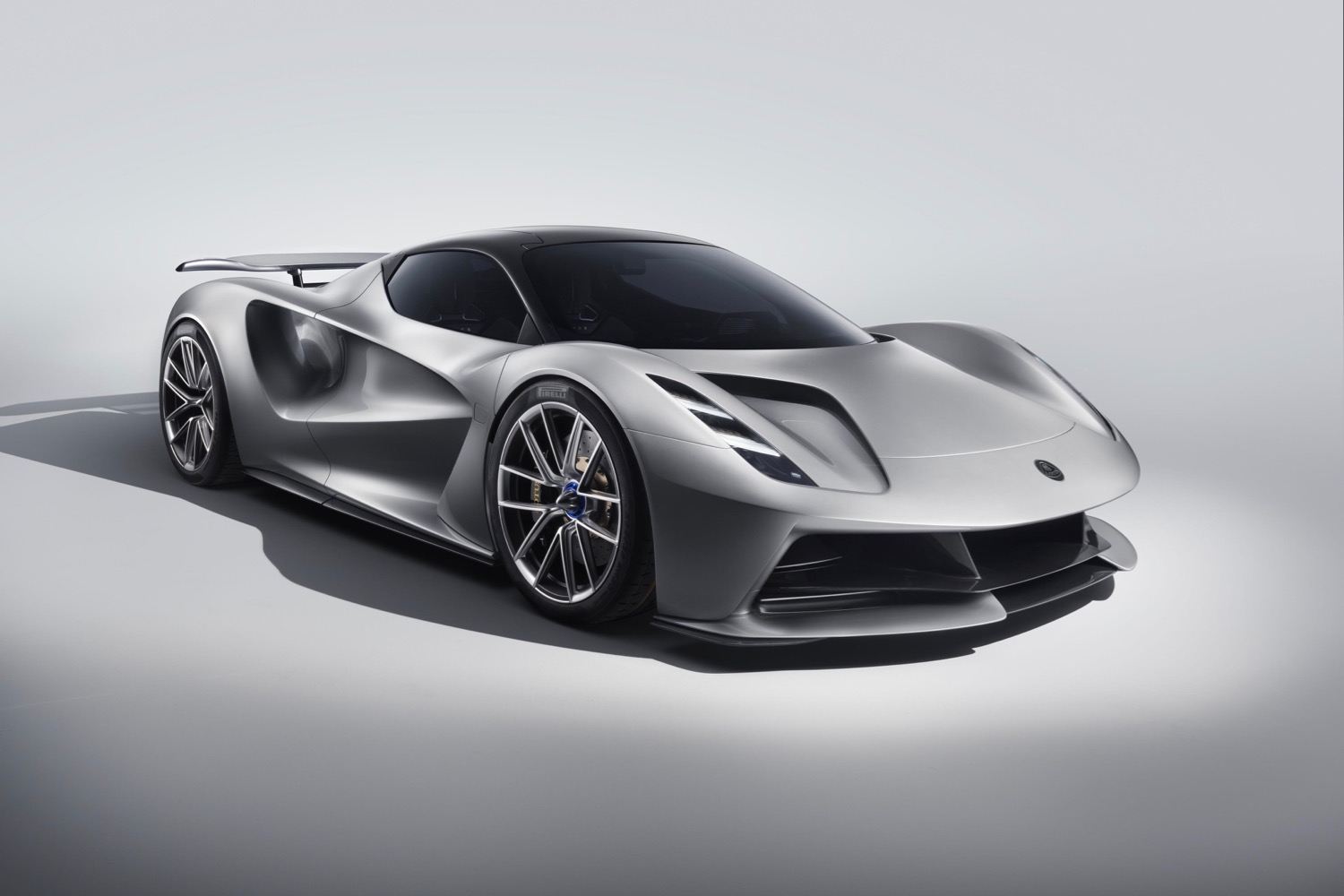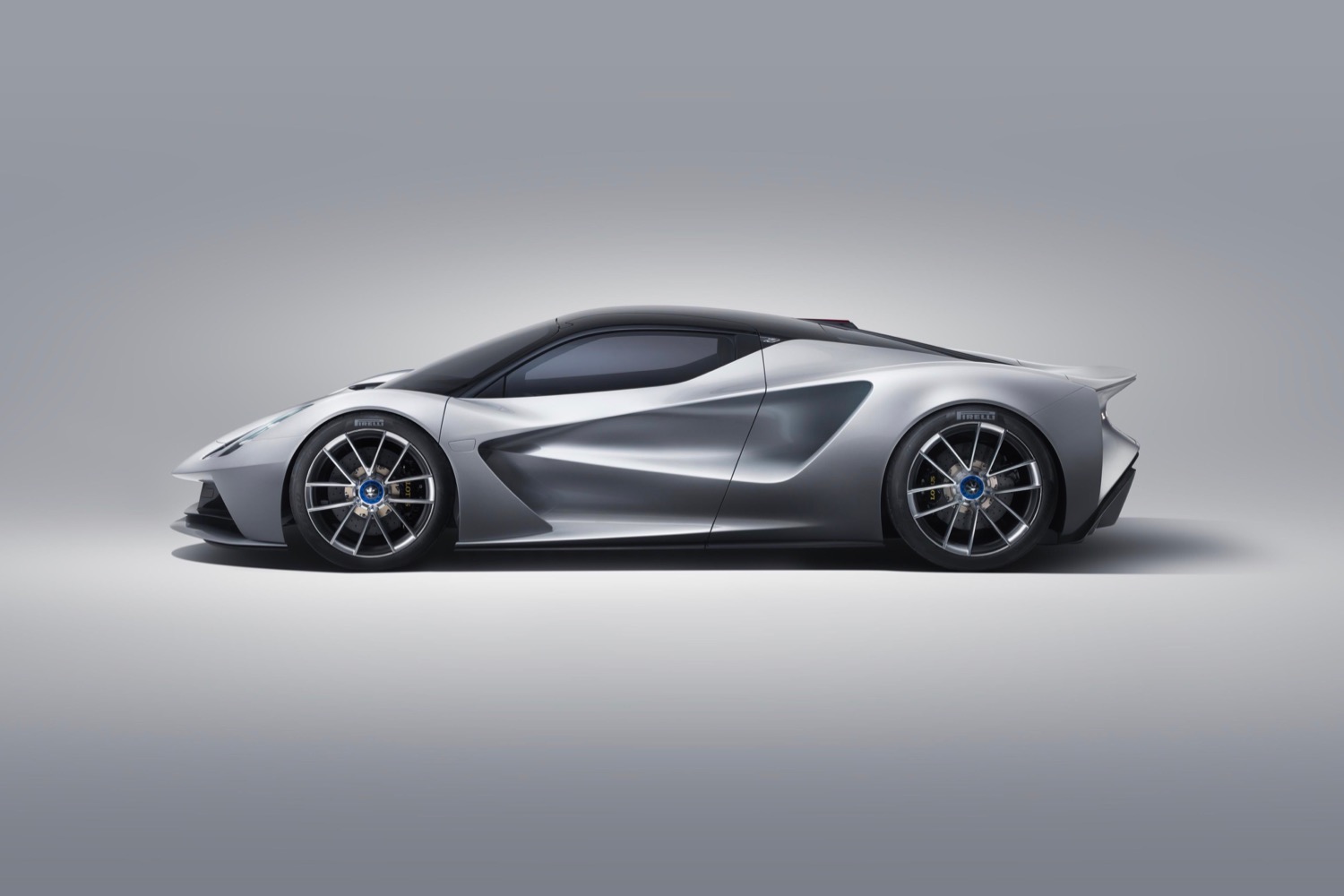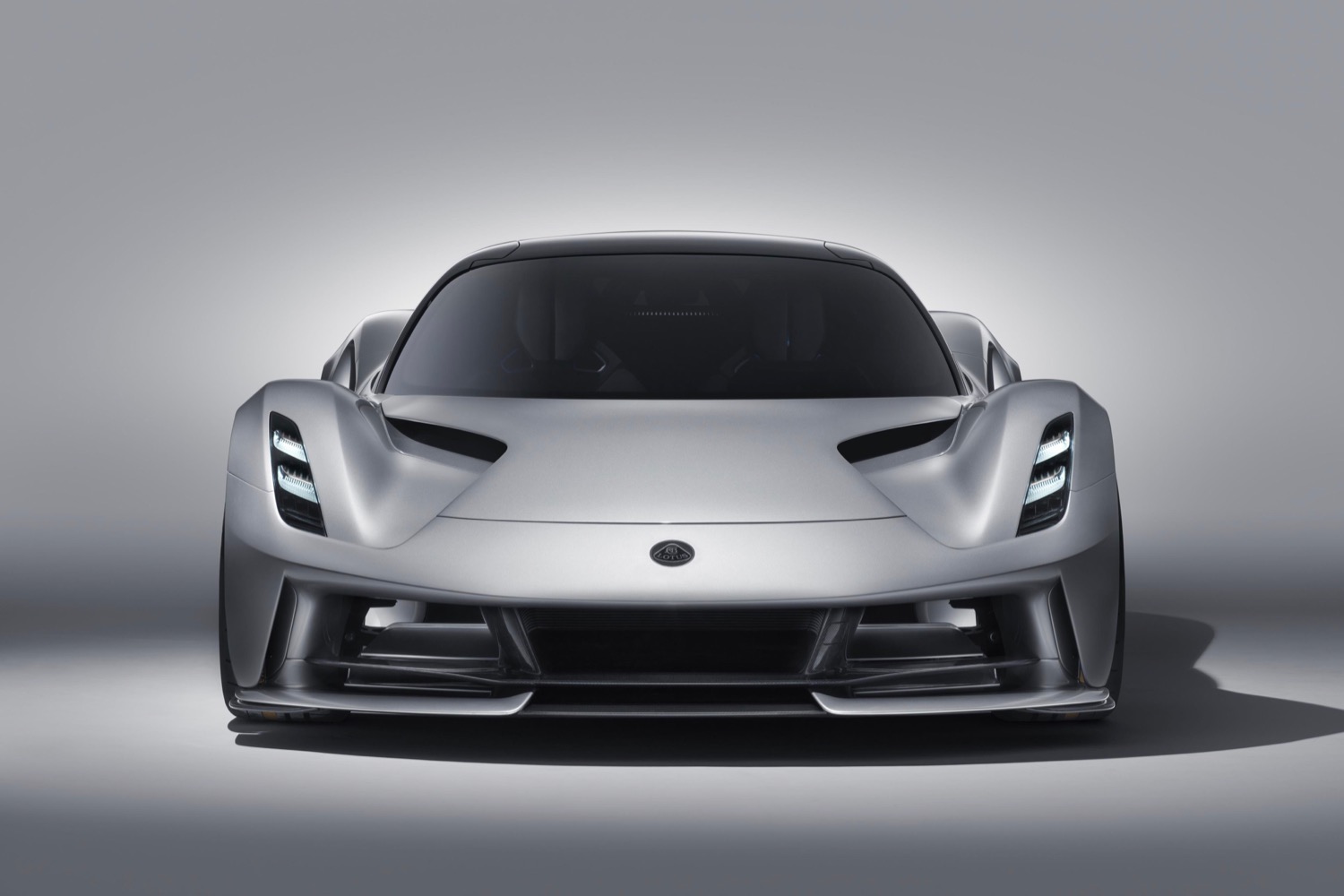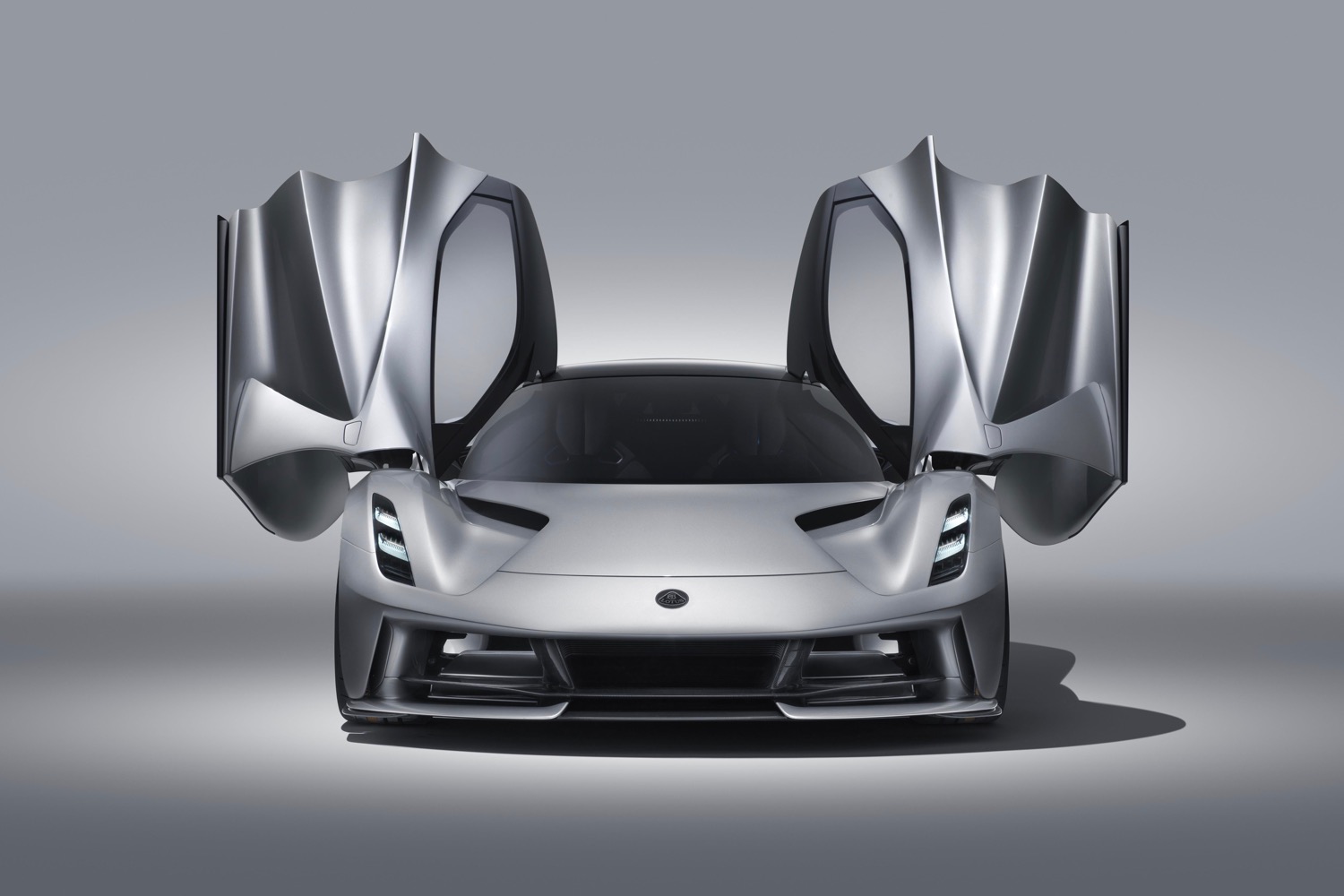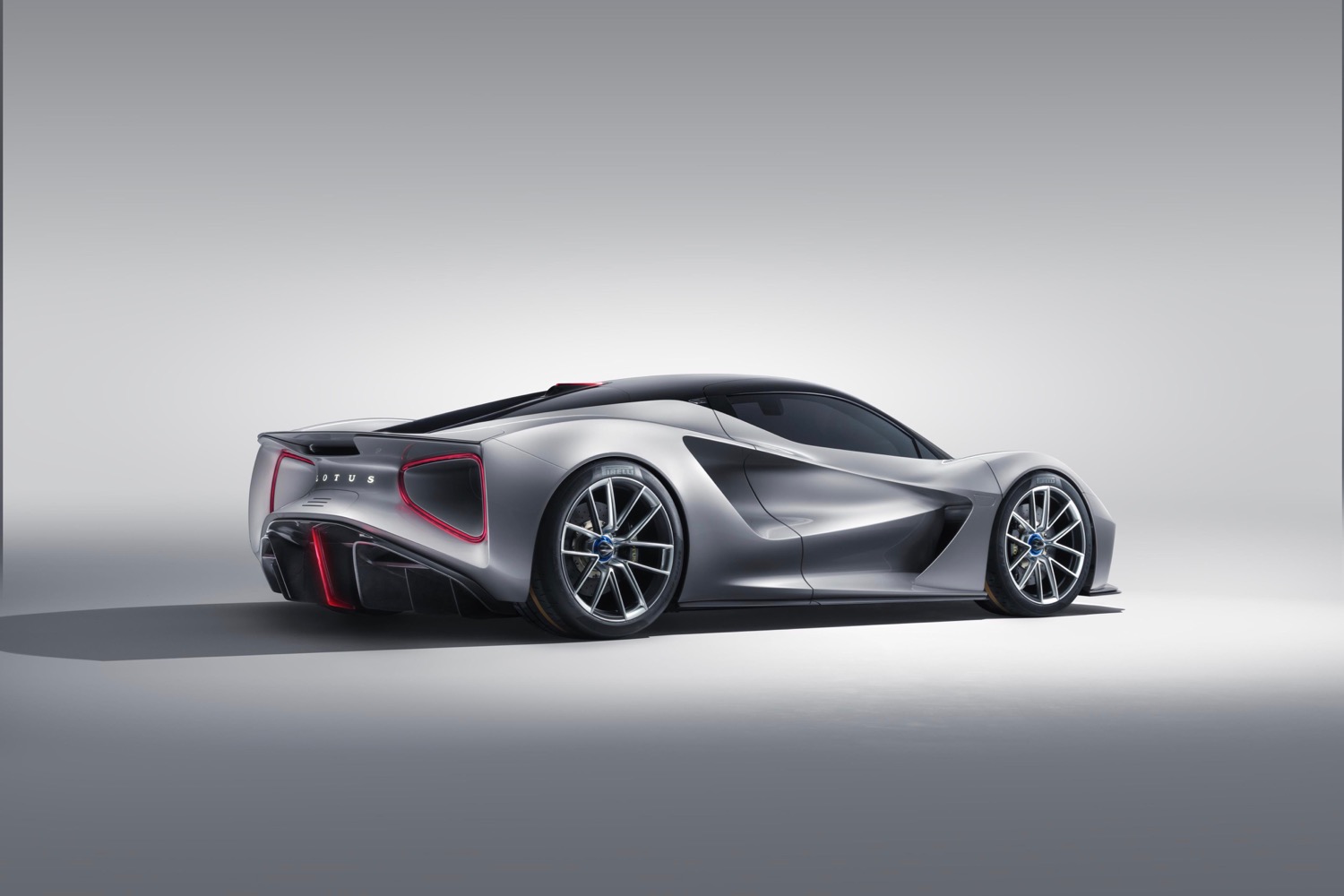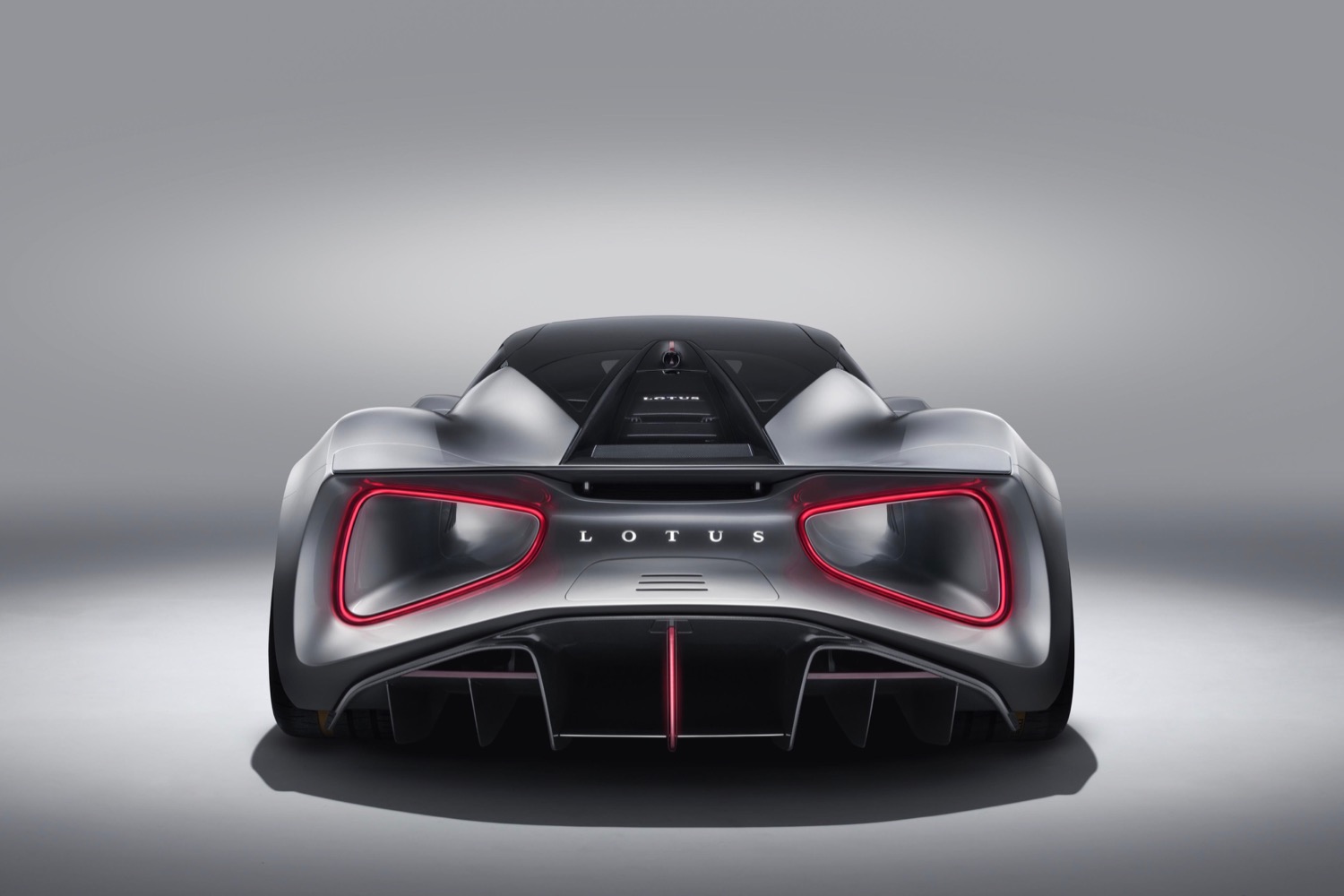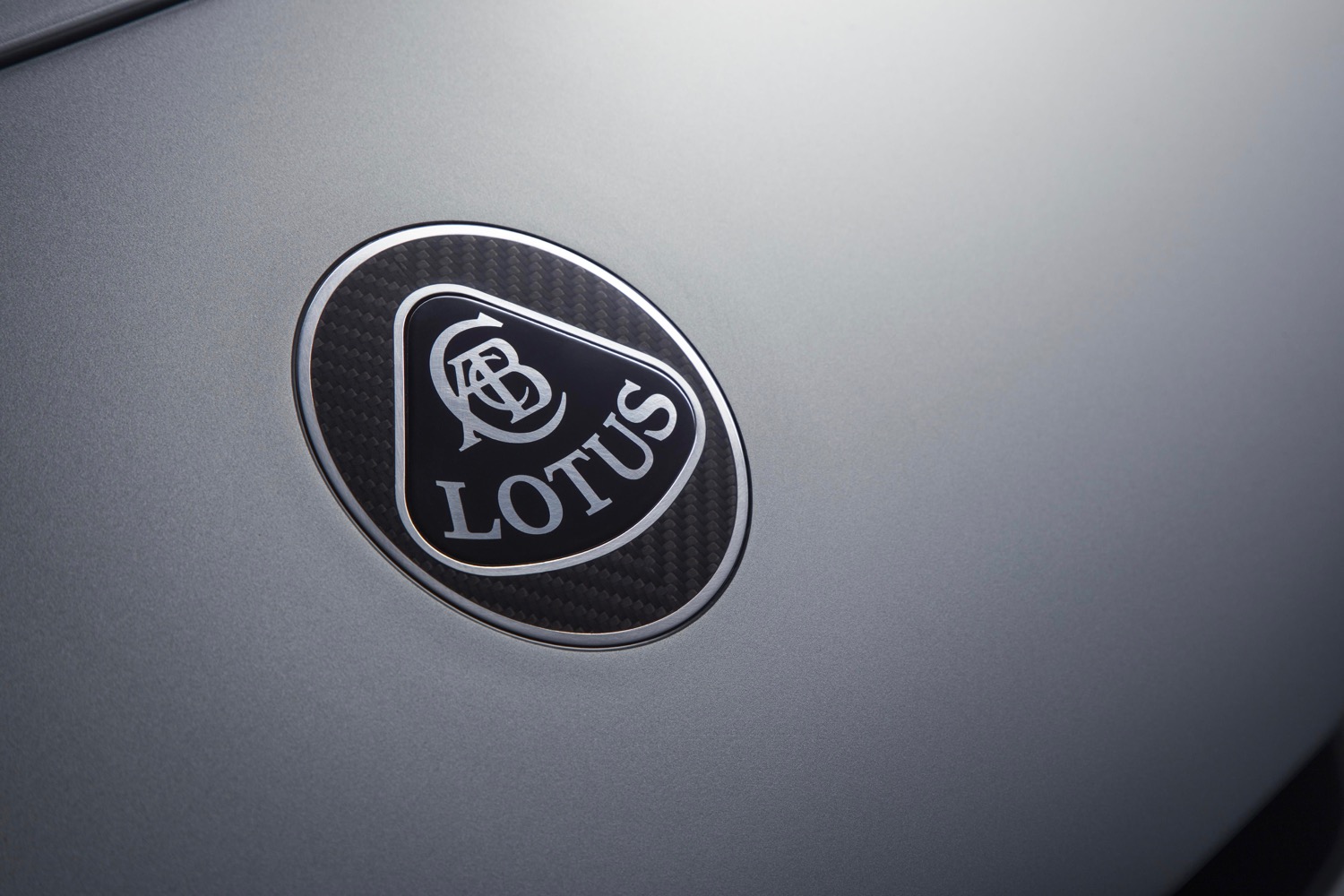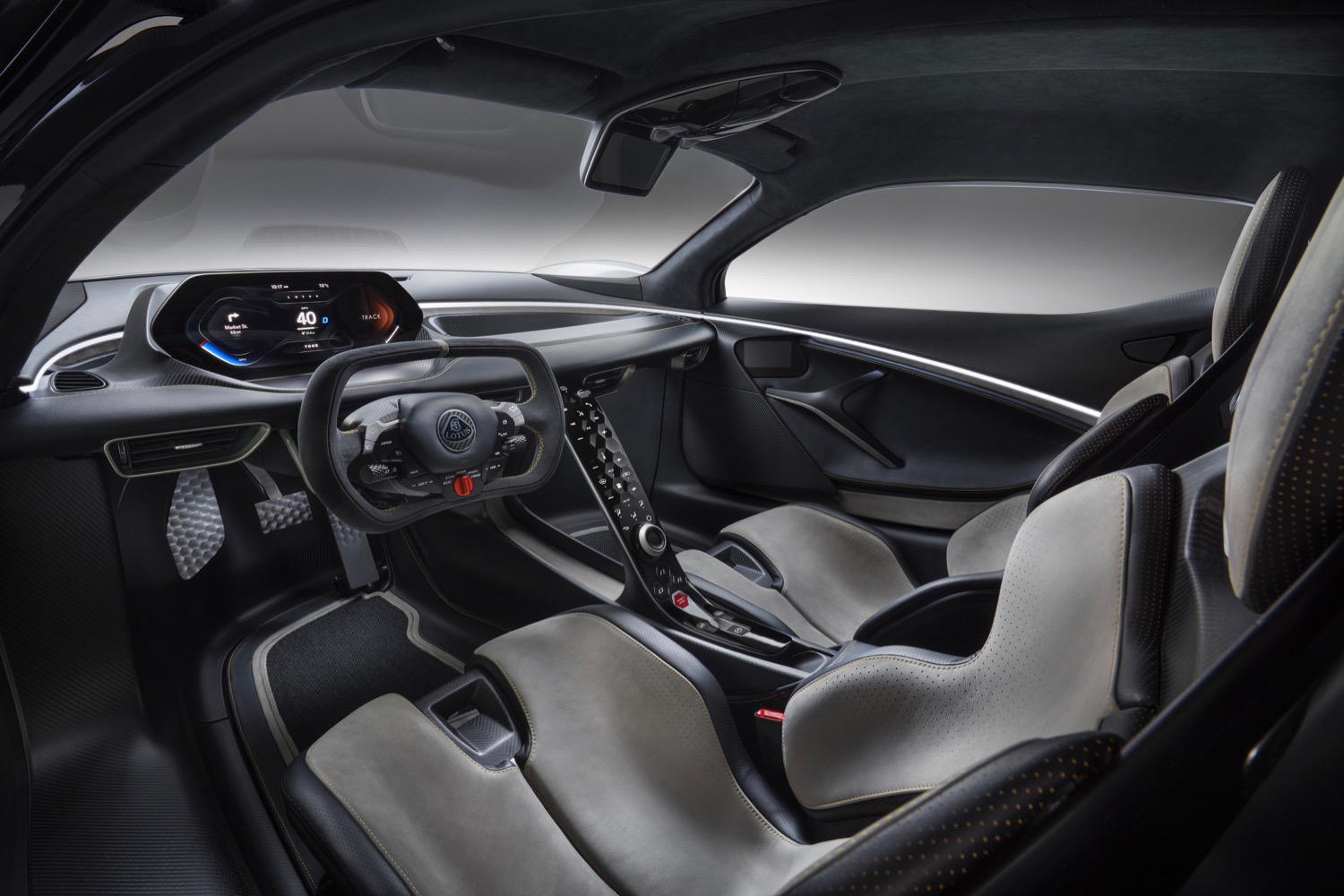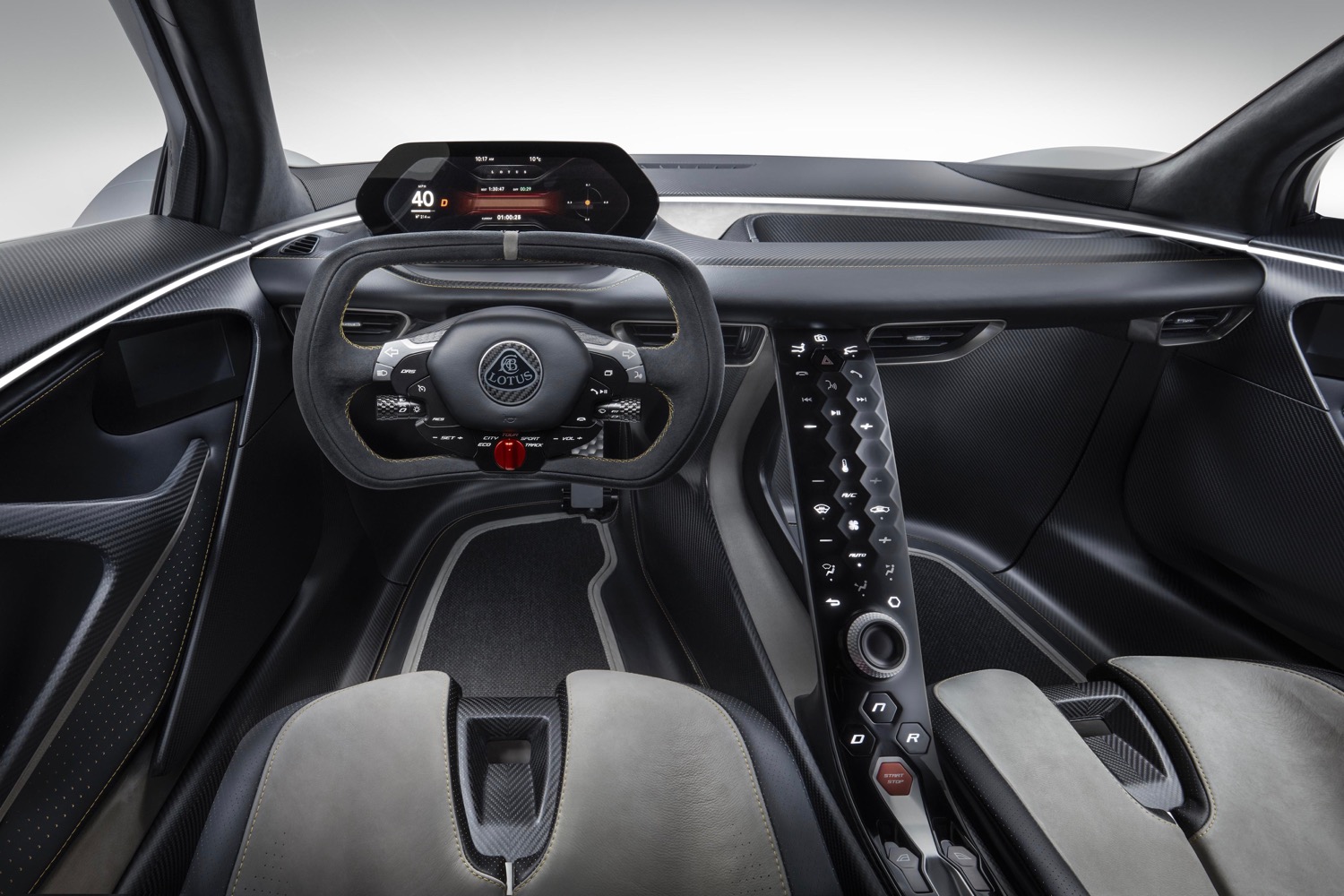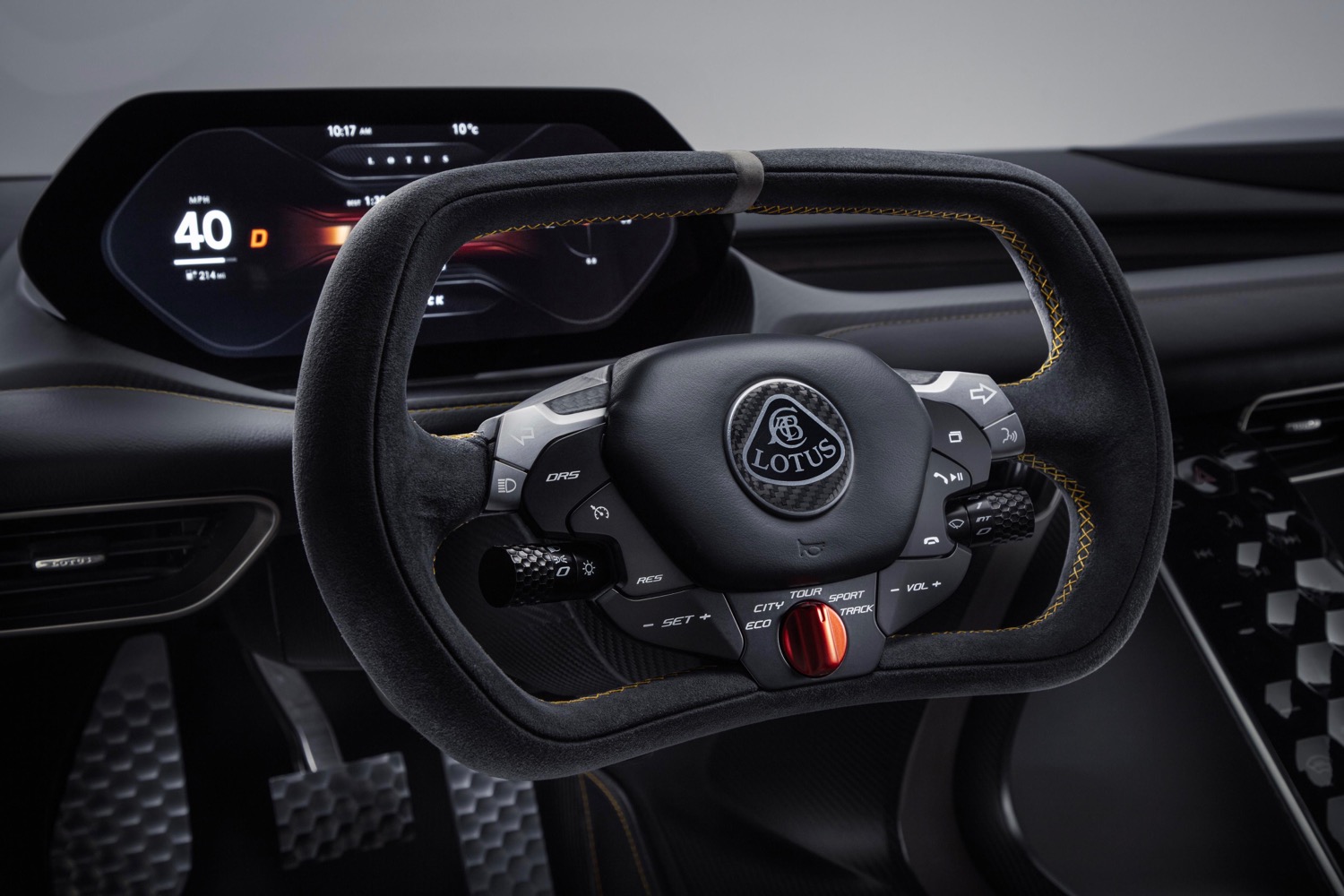It’s been a long time since we’ve heard any major news from Lotus. The plucky British firm once known for innovation has confined itself to rolling out endless variations of its existing models — the Elise, Exige, and Evora — for the past few years. So it was quite a shock (no pun intended) when Lotus unveiled an electric supercar — the Evija. Done with resting on its laurels, Lotus packed the Evija (pronounced “e-vi-ya”) with what the company claims is world-beating tech.
Supercars are all about the numbers, and it looks like the Evija will more than measure up. Lotus hasn’t dialed in the production specs yet, but it’s chasing some ambitious targets. Power output will be somewhere around 2,000 horsepower and 1,250 pound-feet of torque, according to Lotus. The Evija will have one electric motor for each wheel, giving it all-wheel drive and torque vectoring capability. Lotus claims more power will be sent to each wheel than the total power of any of its previous road cars.
Lotus claims the Evija will weigh less than 3,700 pounds in it lightest spec, allowing it to sprint from 0 to 62 mph in under 3 seconds, reach 186 mph in 9 seconds, and top out at over 200 mph. Lotus certainly isn’t the only company making bold performance claims for an upcoming electric car. Tesla has said its Roadster will do 0 to 60 mph in 1.9 seconds, and Rimac has claimed 1.8 seconds for its Concept Two. It will be interesting to see how these cars stack up when — and if — they reach production.
The Evija is more than just its powertrain, though. It features a carbon fiber chassis that’s molded as a single piece, similar to a race car. The underside of the body has channels sculpted into it to bring air to a massive rear diffuser. Designers also created tunnels that channel air through the bodywork. It’s all in the name of increasing downforce, in order to push the car into the road or track surface and generate more grip. Lotus also swapped traditional rearview mirrors for cameras, in order to reduce drag. As with the Audi E-Tron, the cameras probably won’t be available in the U.S. due to regulatory issues. The same can be said for the Evija’s laser-light system, which encompasses both the regular and high beams.
For the Evija’s battery pack, Lotus turned to fellow British firm Williams Advanced Engineering, which previously supplied batteries to the Formula E racing series. The 70-kilowatt-hour pack isn’t the largest around, but Lotus claims it will yield a maximum 250-mile range. That’s likely based on the European WLTP testing cycle, which tends to be more optimistic than the U.S. EPA cycle.
The battery pack will accept an 800-kilowatt charge, according to Lotus, which is much more powerful than anything available today. If charging stations capable of delivering that rate of juice become available, it will be possible to recharge the Evija in just 9 minutes, Lotus claims. Using a 350-kW station — the most powerful currently being discussed — a full recharge will take 18 minutes, according to Lotus.
The Evija’s interior is pure Lotus: Simple, and driver-focused. The driver gets a digital instrument cluster, including a chronograph for recording lap times, and Apple CarPlay and Android Auto come standard as well. And the passenger gets … nothing to look at. The Evija will also feature its own smartphone app and cloud connectivity — features common on much cheaper cars, but new to Lotus.
The Lotus Evija will cost somewhere between 1.5 million and 2 million British pounds ($1.9 million to $2.5 million). The automaker is asking for a 250,000-pound ($310,000) refundable deposit to reserve one of the 130 build slots. Production is scheduled to start in 2020.
